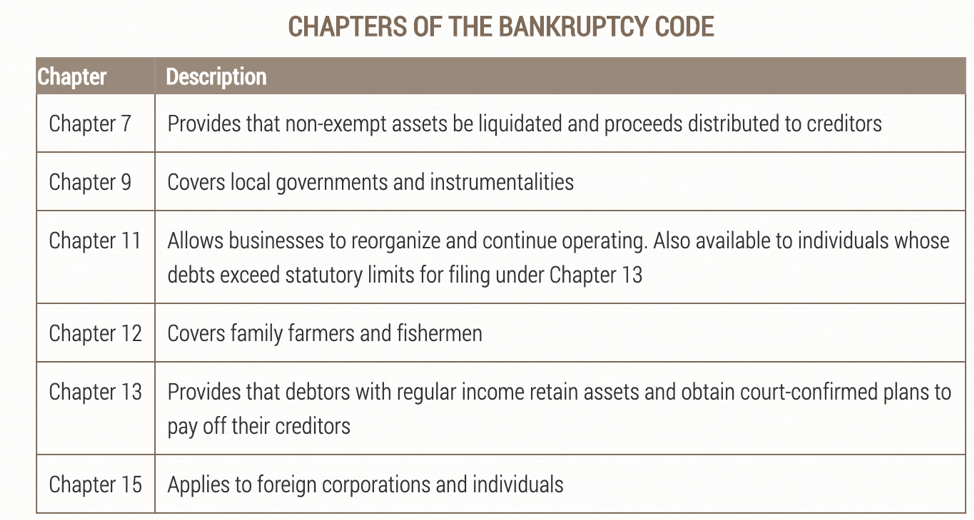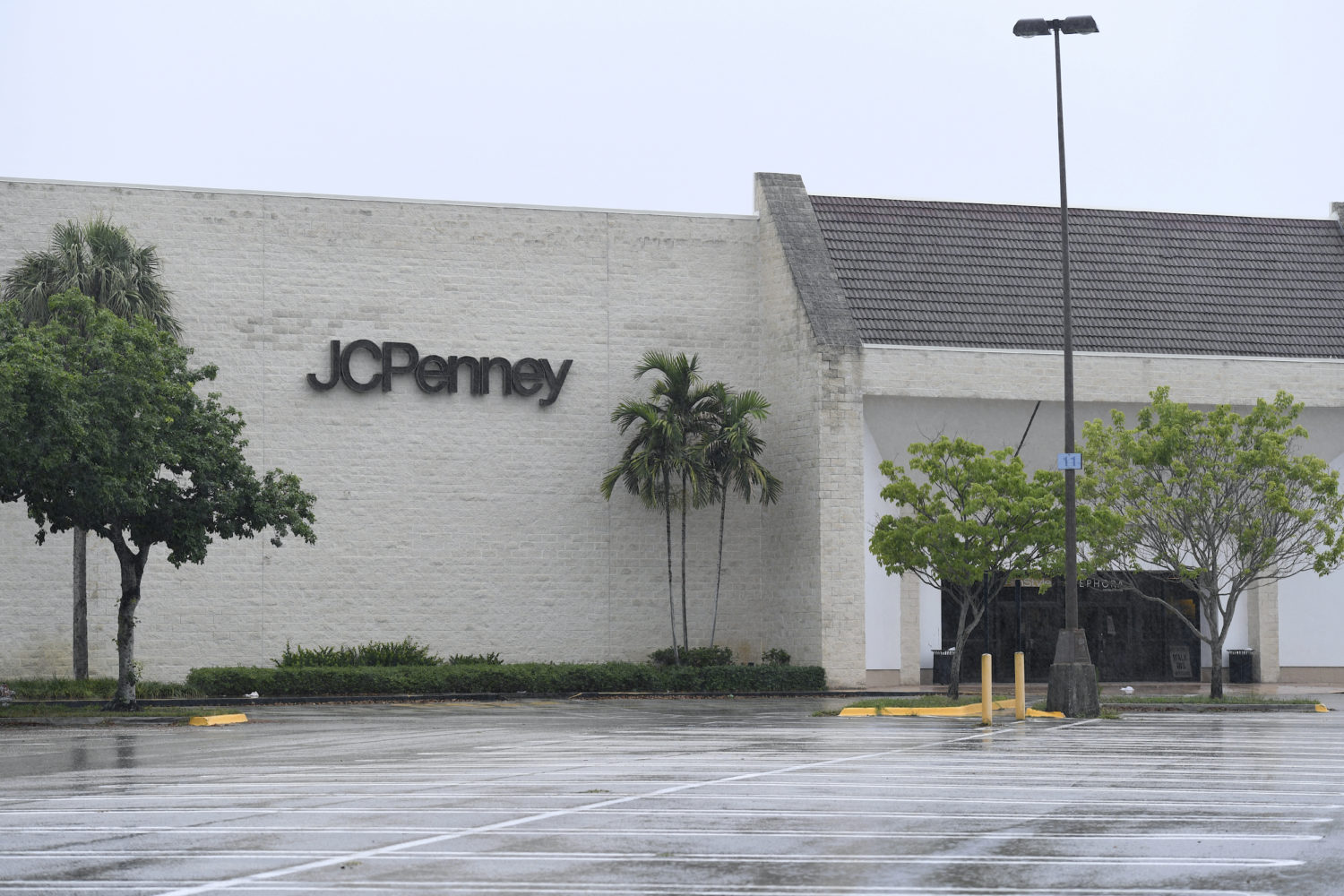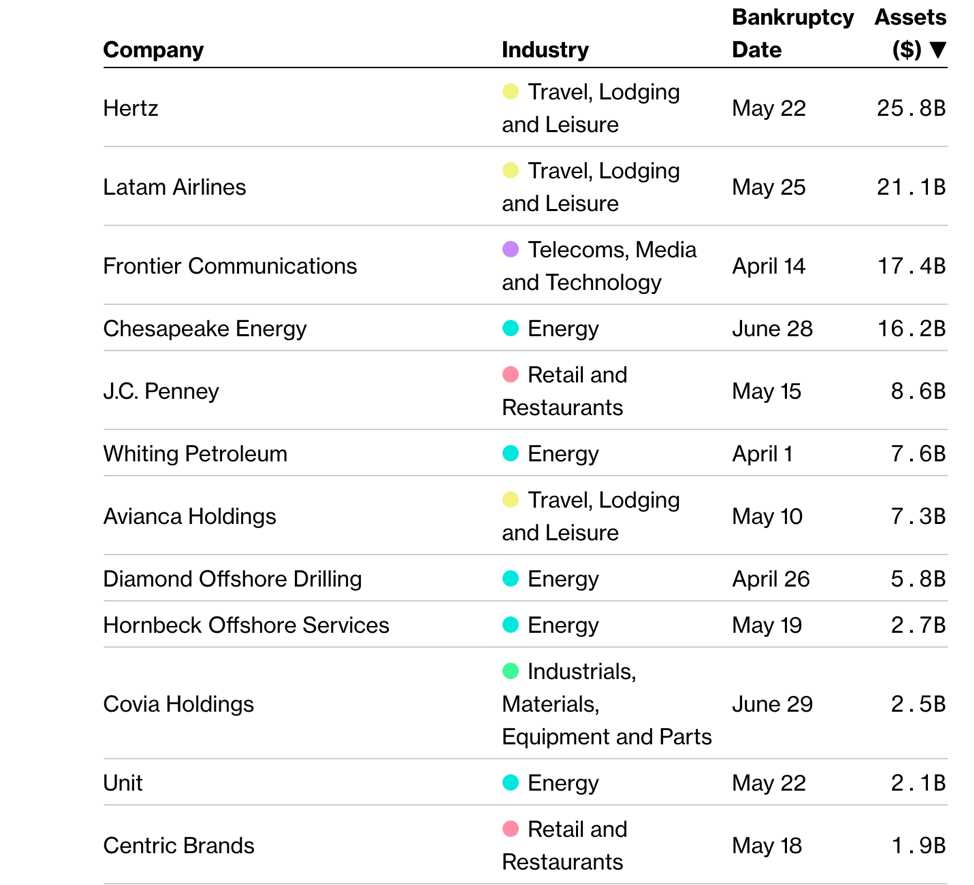 Covering COVID-19 is a daily Poynter briefing of story ideas about the coronavirus and other timely topics for journalists, written by senior faculty Al Tompkins. Sign up here to have it delivered to your inbox every weekday morning.
Covering COVID-19 is a daily Poynter briefing of story ideas about the coronavirus and other timely topics for journalists, written by senior faculty Al Tompkins. Sign up here to have it delivered to your inbox every weekday morning.
In the months ahead, you will be covering bankruptcy cases involving names you could never have imagined you would find in this spot. It is time to take a few minutes to get tuned up for the stories you will be covering.
Hertz, J.C. Penney, Brooks Brothers, J. Crew and Neiman Marcus are just a few of the more than 114 businesses big and small that have filed for bankruptcy in recent weeks and cited COVID-19 as the underlying cause for their financial troubles.
But it is way bigger than those names you know. Legal services company Epiq said bankruptcy filings shot way up last month.
Notably, commercial Chapter 11 filings are up 43% over June of last year, with 609 new filings, up from 424 from the same period last year. For the first half of 2020, total commercial Chapter 11 filings are up 26% with 3,604 new filings, up from 2,855 from the same period last year.
“As expected, U.S. companies are seeking bankruptcy protection while the markets are recovering from the early stages of the global pandemic,” says Deirdre O’Connor, managing director for corporate restructuring at Epiq. “In challenging economic environments, companies attempt to file at the right time to capture the best outcomes at the end of the lengthy process.”
Bloomberg is keeping a running list of big bankruptcies, including the asset sizes involved — which, in another time, might have made some of them “too big to fail.”
Personal bankruptcies have lagged way behind business bankruptcies so far, but it may only be because courts and law offices were closed for much of the spring and still are not running at full capacity. As unemployment benefits run out, bankruptcy courts are bracing for a flood of filings. American Banker offered some possibility that personal bankruptcies may not flood the courts, but historical trends lean toward trouble.
Let’s explore business bankruptcies first, then turn to personal bankruptcies, which may take longer to rev up. One often follows the other.
For starters, the federal courts built a journalist’s guide to help you navigate the system. There are 90 bankruptcy courts, all part of the U.S. District Court system.
If you are going to play in this sandbox, you are going to need a shovel. PACER is your shovel. It is the Public Access to Court Electronic Records system, sort of a search engine for the federal courts. PACER can be a gold mine, but it can be a bear to wrestle with, so spend some time with this webinar by the Journalism Institute at the National Press Club.
Prior to this pandemic, about 95% of all bankruptcy cases were filed by consumers, rather than businesses. Because of the sheer number of individuals versus the number of businesses in the country, that probably won’t change.
A debtor may file bankruptcy under one of several chapters of the Bankruptcy Code, known as Title 11 of the United States Code. As you will see there are two main functions in these chapters. One is flat-out liquidation, which takes what assets are left and spreading them out to the creditors involved. And the other is “reorganization,” which gives a business breathing room to hit reset, pay off what it can and try again.

(Chart from the Administrative Office of the U.S. Courts)
There is a new addition to these better-known chapters. Epiq explained “Subchapter V”:
The new law for Subchapter V of Chapter 11 of the Bankruptcy Code went into effect on February 19, 2020 as a result of the 2019 Small Business Reorganization Act (SBRA). The law was designed to help small businesses move through the bankruptcy process more quickly and with lower costs. Since its introduction, there have been 506 Code Subchapter V filings, with 133 of those occurring in June. Although Subchapter V was not created to respond to the COVID-19 crisis, the arrival of this new option may be the lifeline that small businesses need to survive it.
Let’s dive into those chapters.
Chapter 7 is the most commonly used bankruptcy chapter. Most Chapter 7 cases are lost causes. The person filing bankruptcy has no assets and they just want to get out from under a mountain of debt. Whatever assets they have are liquidated and distributed to the creditors.
Chapters 11, 12 and 13 are all “reorganization” chapters that result in a repayment plan that has to be approved by a judge. The plan probably won’t mean the creditor will get all that is owed. Think of it like a plea bargain. They will make the best deal they can.
Chapter 13 filings are the second-most common choice for bankruptcy filers.
Chapter 9 is fairly rare and involves local governments that go broke.
Bankruptcy does not necessarily mean a company is done for. Some companies do shutter forever, but it is not hard to find loads of other examples, too. Fortune explained:
But countless others over the years — from General Motors to American Airlines to utility PG&E to retailers like grocer Fairway and even Macy’s (its predecessor, Federated Department Stores, filed for Chapter 11 protection in 1992) — have come out of bankruptcy to fight another day. And that’s ultimately the goal of seeking court protection.
“The whole purpose of Chapter 11 is to give a company a chance for a restructuring,” says David Berliner, bankruptcy and restructuring advisor at BDO. “If a company has good prospects for continuing in business, the balance sheet is fixed. The goal is wiping out debt to make it manageable.”
The most interesting part of a Chapter 11 case might be the “first-day orders,” in which a couple of things happen. First, the debtor has to answer questions from creditors about assets. That is when a judge will hear the debtor’s plans to keep operating and pay back creditors. A follow-up hearing will be held to approve the plan for reorganization. Both of these can be great places to meet creditors so you can put a “face” on who gets harmed in bankruptcy cases.
Let’s be clear, except for the lawyers, nobody walks out of bankruptcy court happy. It can be interesting to see how much lawyers, consultants and “turnaround experts” get paid during this process. They get paid before other creditors. The more protracted the legal battle is, the less money there is to pay those original creditors.
The Shorenstein Center at the Harvard Kennedy School said, for journalists, these are the steps that will probably be most interesting:
When a company or a person files for bankruptcy court protection, it will file an initial document that lists the amount of its debts and the amount of its assets. A few weeks later, the company or individual will file a list of all of the businesses and people it owes money. A business reporter should consider this list a free source list.
Then there’s a reorganization plan, which is filed after the company reaches an agreement with its debtors. This plan will disclose key strategic decisions, such as whether the company plans to close locations and cut employees. It will also say how much the creditors will be repaid. It will be described as something like 70 cents on the dollar, or 60 cents on the dollar.
Then there’s the final judge’s ruling, which allows the company to exit bankruptcy court.
[the_ad id=”667826″]
Who gets paid first in a bankruptcy?
Not everybody weighs the same in a bankruptcy filing. Even if a company owes suppliers or employees money, there may be other creditors who will get whatever property or assets the bankruptcy produces. Stockholders in a public company that goes bankrupt are typically the last in line, because the stockholders essentially own the bankrupt company.
For example, in a personal bankruptcy case, the first two creditors in line are:
- Claims for debts to a spouse or children for court-ordered support
- Administrative expenses of the bankruptcy
Lawyers get paid before almost everybody else. It used to be lawyers got their money first, but Congress changed that in 2005. The reasoning behind giving lawyers priority is because if they are not paid, the cases will just sit in court and never get settled.
In Chapters 11, 12 and 13, the first in line are “secured creditors,” meaning creditors who have collateral against a loan. For a car loan, for example, a bank can claim the car. The balance of the loan may or may not get paid in full. All creditors get a share of what is left to distribute.
Employee wages are about fourth in line for repayment, up to a limit of $13,650. If a company goes bankrupt and you had something on layaway and were paying a little at a time, you would be pretty far down the list to get your money back.
For journalists, just remember that the first thing that happens in a bankruptcy case is an “automatic stay,” meaning the company or individual gets some space to sort things out and everybody who is screaming for payment has to stop.
“First Day Motions” are next, in which there is an accounting in court of assets and creditors.
“Executing or rejecting contracts” are decisions the debtor makes about which contracts it will try to fulfill and which ones it wants to walk away from. If you have a contract with a company in bankruptcy and they agree to continue to pay you, the contract stays in place. This often involves landlords who own the building where the business is and intends to stay.
How to investigate bankruptcies
Documents filed in connection with a bankruptcy case are public (unless sealed, which is unusual but could include trade secrets) and can be viewed through PACER or at the bankruptcy clerk’s office. Bankruptcy courts generally have their own clerks. In high-profile cases, the court may designate a public information officer.
You may not know it, but some bankruptcy proceedings are audio-recorded and open to the public, similar to Supreme Court arguments. It is possible for these to be available on PACER, but it is not common.
A couple of years ago at the Investigative Reporters and Editors convention, Wall Street Journal reporter Katy Stech urged journalists to learn how to search federal bankruptcy documents. Stech advised:
Bankruptcy records put a spotlight on drama, trends and quirk. They unlock new details on heavily covered stories, and while some information like trade secrets or defamatory statements can be put under seal, the standards for that are high. The information is filed under penalty of perjury, so it’s trustworthy.
IRE members can access tip sheets from conferences (which is just one of 1,612 reasons to join IRE). Let me give you an idea of the stories waiting for you in those tip sheets. These are just some of the “digging spots” Stech recommended in bankruptcy records:
Digging Spot #1: New filings
Check new chapter 11 filings in your coverage area. There are usually between 30-50 filings a day. PACER’s national case search is good, though it has a one-day delay in getting the information on new filings made to the 94 federal court districts, so I recommend checking for new cases using the local court’s PACER portal.Digging Spot #2: Statement of Financial Affairs/Schedules
Read through a chapter 11 filer’s schedules/statement of financial affairs documents. This is where you can find out how much money a business took in during the last three years or what lawsuits the bankrupt person/business is involved with. In personal bankruptcy cases, these forms show salary information, kids’ ages and details like how much someone spends each month on auto payments, entertainment or student loans. A person or company typically has 14 days to file this information. Find this information by searching the docket in a particular case.Digging Spot #3: Creditor lists
A creditor list shows every business and person that the bankrupt entity has a relationship with. Search the docket in a bankruptcy case for a service list, which is often updated throughout the case, or click on a case’s “Creditors” link.Digging Spot #4: Claims register
Every creditor who wants to be paid a portion of whatever money is doled out has to fill out a claims form. Often, the creditor will file a contract or other typically confidential information as proof that they’re owed money. Get this information by opening a bankruptcy case and clicking on the “Claims Register” link.
By the way, IRE is “going virtual” this year for its conference held Sept. 21-25. Sign up now and learn so much cool stuff that you won’t even notice you have been locked in your house since March.
[the_ad id=”667872″]
A little bankruptcy humor
Around bankruptcy court, you might hear about somebody filing under Chapter 22. It just means a company has filed Chapter 11 twice — like Radio Shack, Gymboree and Payless ShoeSource.
In addition to a pandemic, pay attention to a plague
I am increasingly concerned that the COVID-19 story is sucking up so much attention in the U.S. that we are also unaware of other huge global events. Northeast Africa is experiencing an extreme food shortage caused by desert locusts. The swarms are so large that they can be tracked on mapping services. And it is going to get worse.
Locust Hub is organized by the United Nations. The red dots on the map are swarms. The green dots are “hopper groups,” which are immature locusts who are not yet as mobile.

(Tracking map from Locust Hub)
The locust populations are down some from a month ago, but crop damage reports are just coming into focus.
The UN said that an average swarm, which contains up to 40 million insects, can travel up to 150 kilometers in a single day and can devour enough food to feed 34 million people within that time. Linger on that statistic for a few moments. This is going to require a global response or, as sure as a COVID-19 spike forecasts a rising death count a couple of weeks later, a famine is coming. We should not pretend we didn’t see it unfolding. Surely we can manage multiple pressures at once.
In addition to the locust swarms in northeast Africa, China is now reporting devastating swarms. Chinese officials confirm that locusts have consumed 26 square miles of crops.
As you might imagine, National Geographic has been tracking and documenting the locust movements in photos from Africa to India and now the outbreak in China.
And BTW, the budget deficit just hit $864 billion
In June 2019, the U.S. budget deficit was $8 billion.
In June 2020, we spent $864 billion more than we took in in taxes.
Which means the U.S. is running about a $2.7 trillion budget deficit right now. I suppose we are not surprised since we juiced up the economy with pandemic bailouts and it could be that another big-dollar response is yet to come.
One day, soonish, we will have to have a conversation about this. If you get near a candidate for federal office, it would be worth asking about.
We’ll be back tomorrow with a new edition of Covering COVID-19. Sign up here to get it delivered right to your inbox.
[the_ad id=”667878″]
Al Tompkins is senior faculty at Poynter. He can be reached at atompkins@poynter.org or on Twitter, @atompkins.








